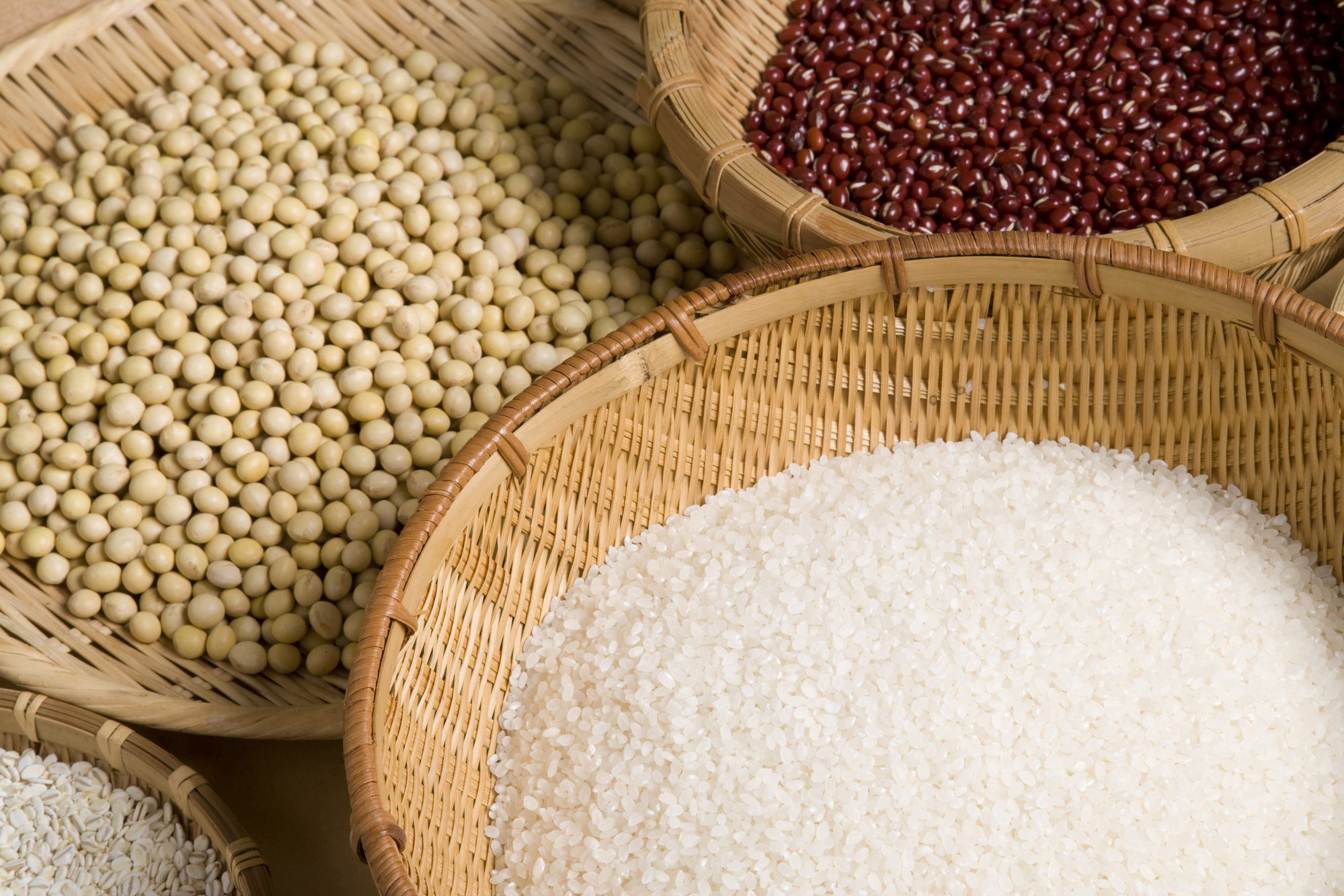Japan’s oldest book, the Kojiki. It dramatically illustrates the history of Japan from the beginning of the world, the appearance of the deities, to the Imperial succession. Behind each impressive episode, there exist numerous “mysteries” that are yet to be solved even today. By exploring each, we will think about the origin of Japanese beliefs and culture.

Toyo’uke has strong association with crops.
Eating is the single most important thing a person does to stay alive. The goddess associated with food is named Toyo’uke.
According to the Kojiki, Izanami, who birthed the gods of the land and nature, finally gave birth to the god of fire. While suffering from the burns resulting from this delivery, the god Wakumusuhi was born from Izanami’s excrement. Musuhi means “the power to give birth.” Toyo’uke is the child of Wakumusuhi. Toyo means “bountiful” and uke means “food.”
She descended to the Earth with Hononinigi, Amaterasu’s grandchild, and was worshiped at the Outer Shrine at the Grand Shrine of Ise. This is the only mention in the Kojiki of Toyo’uke.
Food Offerings for the Gods of the Ise Shrine
According to later accounts, Amaterasu, who was worshiped at Ise, appeared in a dream to the 21st emperor Yuryaku, telling him she wasn’t able to take enough food on her own and that she needed the help of Toyo’uke, the goddess of food. As a result, Toyo’uke was moved from the province of Tanba (modern day Kyoto) to the Outer Shrine at Ise.
At the Grand Shrine of Ise, even today, the Higoto asa yu omike ceremony is performed. This ceremony involves making daily offerings of food in the morning and evening to Amaterasu and the other gods. The offerings are prepared at the Outer Shrine, where Toyo’uke is worshipped.
Fire, Water and Grain
Wakumusuhi, father of Toyo’uke, was born due to the birth of the fire god. The god of water Mitsuhanome also came into being at the same time as Wakumusuhi. As Toyo’uke was born after the gods of fire, water and birth, she likely has a deep connection in particular with rice and other grains.
Rice forms the center of the foods offered to the gods of the Ise Shrine. Grain being born after fire and water in the myths is a rational progression.
Gods of Grain in Other Cultures
In Greek myth, Demeter and her daughter Persephone are gods connected with corn, and were responsible for the spread of barley. North American myths feature goddesses called the Corn Maiden or Corn Mother.
Just as the earth, which gives birth to and raises crops, is often depicted as a goddess, so too are many deities associated with grains. Goddesses of grain from around the world may help us to understand the mysterious Toyo’uke.
-Kokugakuin University has been selected “as a place for the promotion of the study of the Kojiki” by the private university branding project of the Ministry of Education in 2016.-

published in The Japan News on 5/8/2019
Kikuko HIRAFUJI
Research
Mythology, Religious Study, History of Religion
Papers
Deities in the interwar period(2023/09/08)
Translation Issues in Kojiki: God, Deity, or Spirit?(2016/01/01)

